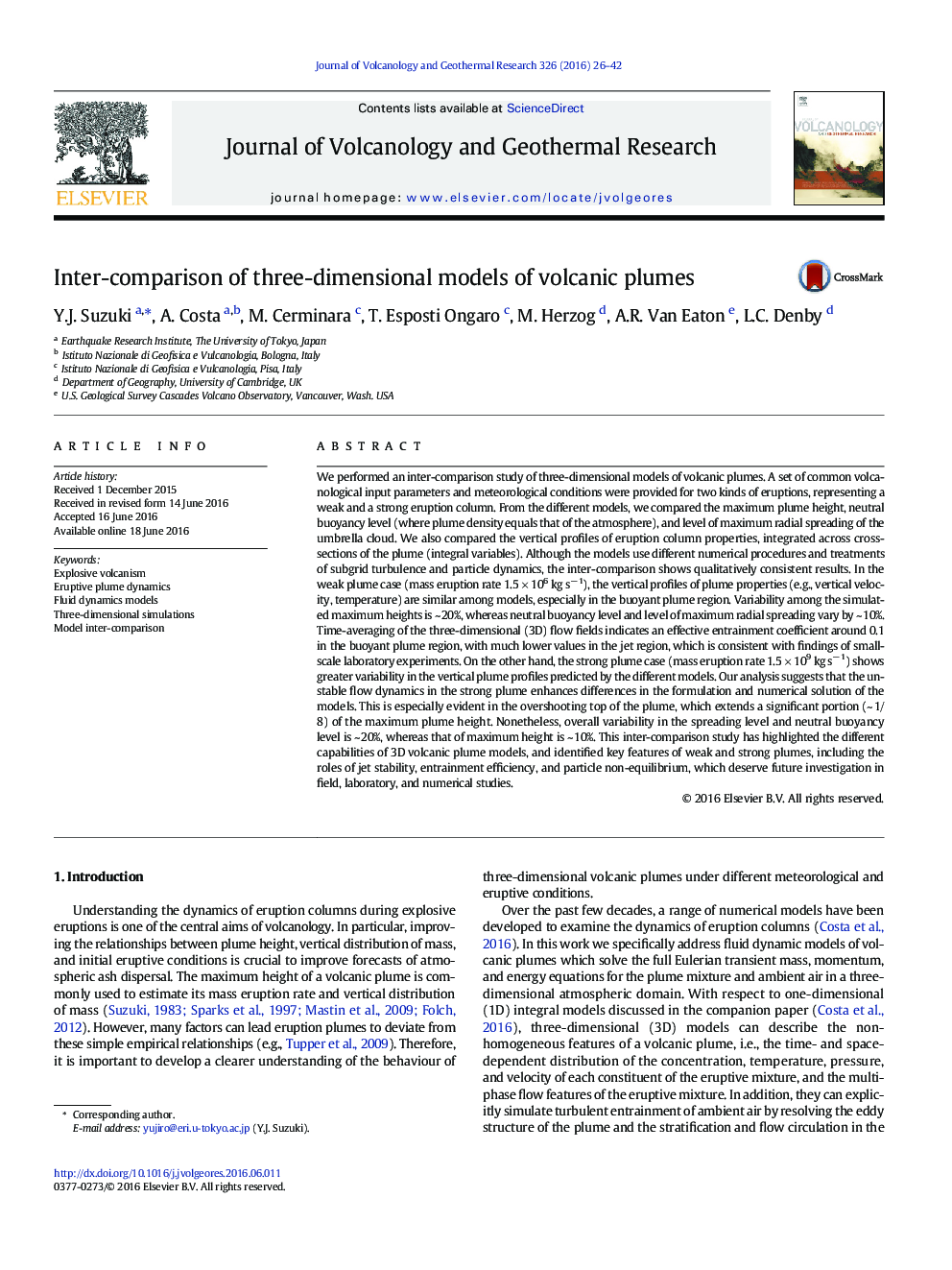| کد مقاله | کد نشریه | سال انتشار | مقاله انگلیسی | نسخه تمام متن |
|---|---|---|---|---|
| 4712875 | 1638296 | 2016 | 17 صفحه PDF | دانلود رایگان |
We performed an inter-comparison study of three-dimensional models of volcanic plumes. A set of common volcanological input parameters and meteorological conditions were provided for two kinds of eruptions, representing a weak and a strong eruption column. From the different models, we compared the maximum plume height, neutral buoyancy level (where plume density equals that of the atmosphere), and level of maximum radial spreading of the umbrella cloud. We also compared the vertical profiles of eruption column properties, integrated across cross-sections of the plume (integral variables). Although the models use different numerical procedures and treatments of subgrid turbulence and particle dynamics, the inter-comparison shows qualitatively consistent results. In the weak plume case (mass eruption rate 1.5 × 106 kg s− 1), the vertical profiles of plume properties (e.g., vertical velocity, temperature) are similar among models, especially in the buoyant plume region. Variability among the simulated maximum heights is ~ 20%, whereas neutral buoyancy level and level of maximum radial spreading vary by ~ 10%. Time-averaging of the three-dimensional (3D) flow fields indicates an effective entrainment coefficient around 0.1 in the buoyant plume region, with much lower values in the jet region, which is consistent with findings of small-scale laboratory experiments. On the other hand, the strong plume case (mass eruption rate 1.5 × 109 kg s− 1) shows greater variability in the vertical plume profiles predicted by the different models. Our analysis suggests that the unstable flow dynamics in the strong plume enhances differences in the formulation and numerical solution of the models. This is especially evident in the overshooting top of the plume, which extends a significant portion (~ 1/8) of the maximum plume height. Nonetheless, overall variability in the spreading level and neutral buoyancy level is ~ 20%, whereas that of maximum height is ~ 10%. This inter-comparison study has highlighted the different capabilities of 3D volcanic plume models, and identified key features of weak and strong plumes, including the roles of jet stability, entrainment efficiency, and particle non-equilibrium, which deserve future investigation in field, laboratory, and numerical studies.
Journal: Journal of Volcanology and Geothermal Research - Volume 326, 15 October 2016, Pages 26–42
